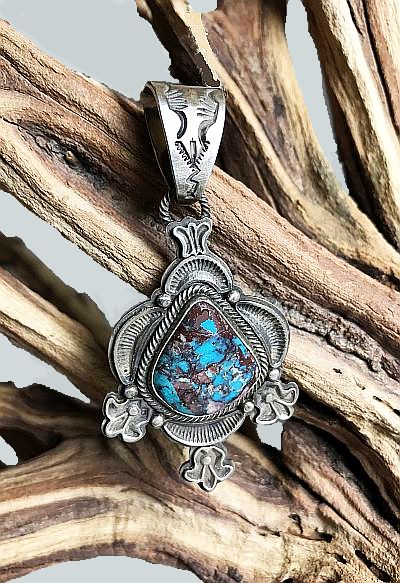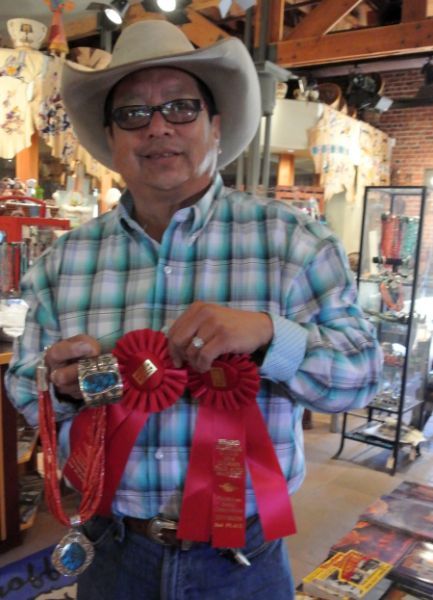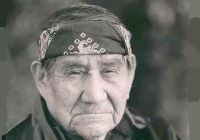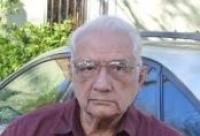Sterling silver pendant by renowned Navajo silversmith Tommy Jackson. The heavily stamped 1 1/4" x 2"pendant has a 3/4" bale. The Bisbee turquoise cabochon is 3/4" x 3/4".
The Bisbee mine, located near Bisbee, Arizona is one of the most famous mines in America. Bisbee Turquoise is known for its hard, beautiful blue stone that has unique matrix. The matrix is sometimes dark brown or a red/brown spider web. Bisbee turquoise can range in color from a pale blue to the more high quality dark blue that it is known for.
Navajo silversmith Tommy Jackson, born 1958, is a third generation silversmith, following the footsteps of his parents, Martha and Gene Jackson. Tommy was born in 1958 and making jewelry since he was twenty. He is known for carefully selecting his stones and uses only the highest quality of turquoise and coral he can find. Tommy has won numerous awards for his Navajo jewelry including the Heard Museum Indian Market in Phoenix, Santa Fe Indian Market, and The Museum of Northern Arizona.
About the artist
Tommy Jackson
Tommy Jackson was born in Phoenix, Arizona on January 20, 1958 but grew up in the heart of Navajo land in Chinle, Arizona. He went to high school in Chinle, the town at the mouth of the legendary Canyon de Chelly - a stronghold for 19th century Navajo, known then as the "Lords of the Land". Steeped in mythology, this landscape echoes the strength and beauty in the Navajo bedrock of beliefs—foremost of those is responsibility to family and clan. A husband, father, and grandfather, Tommy is also a world-renowned gold and silversmith, his award-winning pieces on exhibit in museums and treasured in collections around the world. As a premier Navajo Silversmith he counted amongst those few known as “The Supersmiths.”
Jackson started silversmithing in 1973, learning at the bench of his parents, renowned silversmiths Gene and Martha Jackson. (He is also the nephew of Dan Jackson, another well-known silversmith.) However, it was his mother who urged him to pursue a degree, and he followed her footsteps into education, eventually teaching elementary school at Wide Ruins on the Reservation. But jewelry-making called to him in his spare time, in the after-hours, in the late night, and by 1988 he was winning prestigious awards, and has continued winning nearly every year since at the big shows, including Santa Fe Indian Market and the Heard. He was also chosen as Navajo Tribal representative for the Salt Lake City Winter Olympics.
A striking example of Tommy's pieces is the motif of Navajo rug designs. He sometimes works these patterns directly into the gold or silver; or he inlays stones in visually stunning creations that reflect the complexity of Navajo tapestries. Other pieces are a declaration of his passion for high-grade American turquoise. These pieces are all about the great stone. He will use heavy-gauge silver, and in keeping with the old style tradition then chisel or hand-stamp, all with an eye of showcasing a great old American turquoise stone such as Bisbee, Morenci, Lander Blue or Candelaria. He is known for integrating traditional Navajo designs with a modern flair, working with gold and silver and a variety of precious and semi-precious stones.
He has won numerous awards for his beautiful and unique jewelry from the Heard Museum Show in Phoenix, Santa Fe Indian Market and The Museum of Northern Arizona, to name a few including First at Indian Market, as recently as 2014. He and his wife, Marie, who does much of the stone-cutting for his pieces, have pieces featured in national publications.














